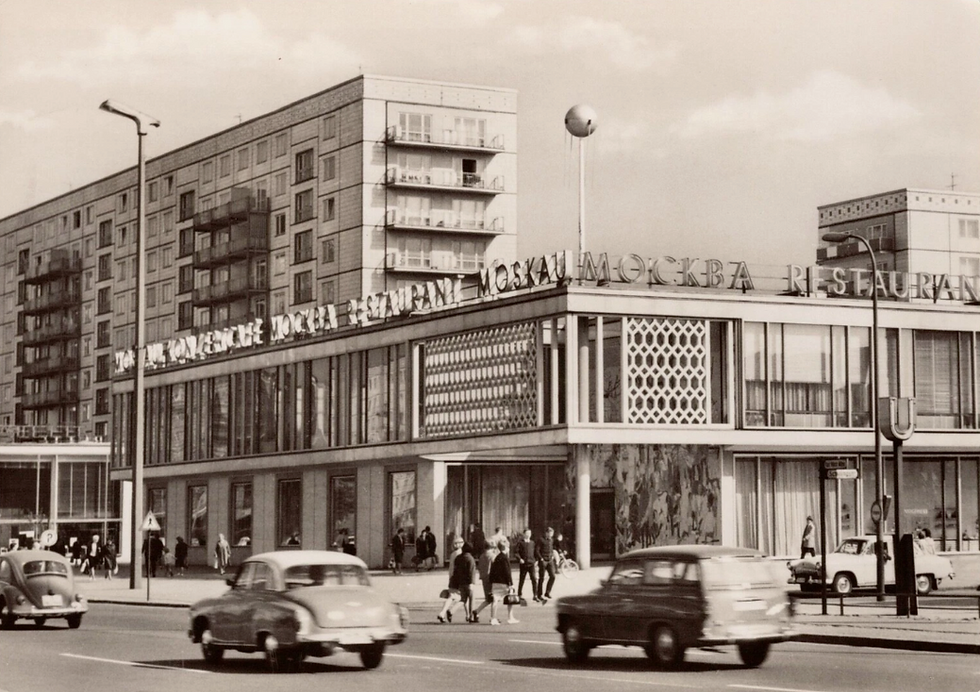Daily LIFT #826
- Michael Laxer
- Nov 2, 2022
- 3 min read

Monument to Karl Marx, Leningrad (bronze and stone) sculpture Nikolai Tomsky, USSR 1932 -- Daily LIFT #826
Nikolai Tomsky (sometimes Tomskii) was a famed Soviet sculptor who was wounded fighting for the Reds in the revolutionary civil war. He died in 1984.
From the Great Soviet Encyclopedia, 1979:
Nikolai Vasil’evich Tomskii:
Born Dec. 6 (19), 1900, in the village of Ramushevo, in present-day Novgorod Oblast. Soviet sculptor. People’s Artist of the USSR (1960), member of the Academy of Arts of the USSR (1949, president from 1968). Hero of Socialist Labor (1970). Became a member of the CPSU in 1950.
From 1923 to 1927, Tomskii studied with V. V. Lishev at the Leningrad Industrial Art Technicum. His participation in the restoration of monumental decorative sculpture in Leningrad taught him the techniques of the 19th-century Russian school of sculpture, which formed the basis of his art. One of Tomskii’s most important early projects was a sculpture of S. M. Kirov. The artist’s best pieces from the 1930’s demonstrate how natural the principles of socialist realism were for him. Combining the individual and the typical, Tomskii used a characteristic gesture and carefully modeled forms to create figures imbued with heroic feeling, as seen in the monument to S. M. Kirov in Leningrad (bronze and granite; unveiled 1938; State Prize of the USSR, 1941), the statue of A. Busygin (plaster of paris, 1937), the monument to V. I. Lenin in Voronezh (bronze and granite, unveiled 1940), and a number of works honoring the heroes of the Great Patriotic War.
In the late 1940’s, Tomskii produced numerous monuments, including one to I. R. Apanasenko in Belgorod (bronze, 1944–49). He also did many portraits during this period, for example, those of I. D. Cherniakhovskii (marble, 1947, Tret’iakov Gallery), M. G. Gareev (basalt, 1947, Tret’iakov Gallery), P. A. Pokryshev (marble, 1948, Tret’iakov Gallery), A. S. Smirnov (marble, 1948, Tret’iakov Gallery), and I. N. Kozhedub (bronze, 1948, Russian Museum, Leningrad). The first above-mentioned portrait won Tomskii the State Prize of the USSR in 1948, and the others won him the prize in 1949.
Tomskii was again awarded the State Prize of the USSR in 1950 for the monument to Apanasenko, a cycle of monumental reliefs depicting historical and revolutionary themes (plaster of paris, 1949, in collaboration with other sculptors), and a portrait of S. M. Kirov (marble, 1949, Tret’iakov Gallery). In 1951 he sculpted a portrait of N. Gogol (marble; Tret’iakov Gallery; State Prize of the USSR, 1952), and in 1952 he executed a monument to the writer for the city of Moscow (bronze and granite). As in the 1930’s, Tomskii did many portraits of V. I. Lenin, including the monuments in bronze and granite in Orel (1949–61), Vil’nius (1952), and Vologda (1958).
Beginning in the late 1950’s, Tomskii sought more active and expressive forms in his monuments. This striving is seen in his monument to V. I. Lenin in Berlin (granite, 1970; Lenin Prize, 1972). The individual features of the subject became more important, and the modeling technique for portraiture became more specific (the portrait of D. Rivera, bronze, 1956–57, Tret’iakov Gallery).
Since 1948, Tomskii has taught at the V. I. Surikov Moscow Art Institute. He became a professor there in 1949 and served as rector from 1964 to 1970. From 1951 to 1956 he was chairman of the Moscow Union of Soviet Artists. Tomskii was a deputy to the third, sixth, seventh, eighth, and ninth convocations of the Supreme Soviet of the RSFSR and a delegate to the Twenty-fourth and Twenty-fifth congresses of the CPSU. He has been awarded two Orders of Lenin, the Order of the Red Banner of Labor, and various medals.







Comments